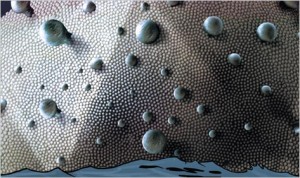Planet Of Viruses
I just finished reading Carl Zimmer’s newest book, A Planet of Viruses. When the book arrived and I realized its viral stature (a mere 94 pages containing 4 sections with 12 chapters and images) I was a bit saddened. Having previously read Microcosm, on the biology gleaned from the science of studying E. coli, I was primed to delve into the practice of virology and didn’t think 94 pages could deliver the fix I desired.
Well, having read the book, I still can’t say that it did. But is wasn’t a waste of time either. Here are a few thoughts…
- Each chapter informs about a particular virus or group of viruses and is written with an expected passion for the history and science. The chapters are a bit too succinct though. You get drawn in to the story that is being told only for it to finish too soon. In fact, the chapters average just over 6 pages in length (some 76 written pages in total). Each chapter is a wonderful stand-alone story that shares specific researched insights that could inform any class discussion of the world of viruses, and may make a good introduction for students and lay people alike.
- The book has a more general trajectory as well, progressing from our initial awareness of viruses (via Tobacco Mosaic Virus), through old companions (Rhinovirus, Influenza Virus, and Human Papillomavirus) and their ubiquity (Bacteriophages, Marine Phages, and Endogenous Retroviruses), to more recent epidemics and issues of eradication (HIV, West Nile Virus, SARS and Ebola, and Smallpox). The layout fully supports the title’s claim, and Zimmer presents an apprecaited and new perspective on the viruses as a necessary and integral part of the living world.
I took some time looking around for some more literary reviews of the book to share (NY Times, etc…), but I couldn’t find much more than book sellers and other useless links. Here the few that I found…
The book was born from a more general project led by the University of Nebraska at Lincoln called the World of Viruses. This site is still in development but appears to have the goal of supporting some curricular materials on viruses in the future.
In summary, I enjoyed and learned enough from Carl’s new book to make it a worth while read, although I expected much more.



Here is a link to the PLOS review of the book:
http://www.plosbiology.org/article/info:doi/10.1371/journal.pbio.1001139
Now that Michael makes note of it, I must confer that there is definitely a lack of molecular level information in this book.
I just finished the book myself and had a similar experience to Eric’s. Not much on the molecular side of the whole story, which disappointed me a little bit. However, the book is very accessible and could work well in a general biology classroom with freshman and sophomores. Both its brevity and focus away from “hardcore” molecular biology and chemistry would be strengths in such a use.